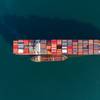ClassNK Release New Nickel Ore Guidelines
ClassNK Releases Second Edition of "Guidelines for the Safe Carriage of Nickel Ore."
ClassNK has released a new revised edition of its "Guidelines for the Safe Carriage of Nickel Ore" which was first released in May 2011 in response to major marine casualties caused by a loss of stability as a result of the liquefaction of nickel ore. This first edition summarized operational precautions and recommendations from past findings for the prevention of such liquefaction.
However, ClassNK decided to update these guidelines to provide an even greater level of support to the maritime community. Under the provisions of the International Maritime Solid Bulk Cargoes (IMSBC) Code, vessels can carry cargoes subject to liquefaction even if the moisture content is in excess of the transportable moisture limit (TML), as long as the ship is “specially constructed or fitted to carry the cargo, and if evidence of approval by the Administration is stored on board the ship (Ref. 7.3.1.1*1 and 7.3.2.2*2 of IMSBC Code)”. And yet, no special international criteria or standards have ever been established to govern this approval.
With this in mind, ClassNK has proposed appropriate stability and hull strength criteria, and incorporated them into "Guidelines for the Safe Carriage of Nickel Ore <Second Edition>". The intention of this new, improved publication is to provide the Administrations in each country with the necessary standards for issuing evidence of approval for specially constructed cargo ships for the carriage of nickel ore, and by extension, increase the safety of the seas they ply.
These criteria are based on the results of various tests and simulations, implemented over a period exceeding six months, to ascertain the properties of nickel ore in excess of the transportable moisture limits.
For ships which comply with these stability and hull strength criteria, ClassNK offers technical services such as “(a) Approval of relevant drawings”, “(b) Issuance of approval certificate as specially constructed cargo ship” and “(c) Special class notation”. Such documentation should prove useful in obtaining the evidence of approval from the relevant Administration. To this end, ClassNK has already made administrations around the world aware of the concepts and technical grounding of these services prior to publication of these guidelines. As a result, a specially constructed cargo ship received official approval from the Government of Panama on 17 October 2011. Several other governments have indicated their intention to follow suit.
This guideline can be viewed via the “Products and Services” menu of the ClassNK website (http://www.classnk.or.jp/hp/en/index.html) after logging in to the My Page section.
*1 IMSBC Code 7.3.1.1
Concentrates or other cargoes which may liquefy shall only be accepted for loading when the actual moisture content of the cargo is less than its TML. Notwithstanding this provision, such cargoes may be accepted for loading on specially constructed or fitted cargo ships even when their moisture content exceeds the TML.
*2 IMSBC Code 7.3.2.2
Specially constructed cargo ships shall have permanent structual boundaries, so arranged as to confine any shift of cargo to an acceptable limit. The ship concerned shall carry evidence of approval by the Administration.










